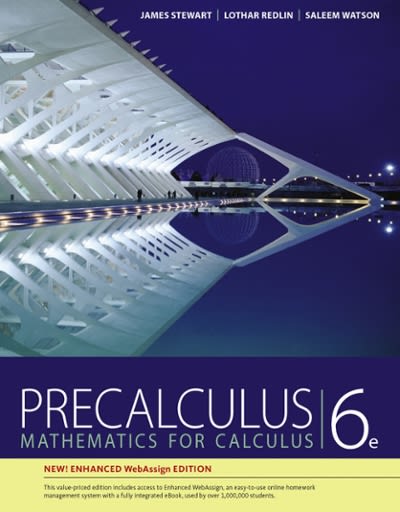Answered step by step
Verified Expert Solution
Question
1 Approved Answer
1. (1 point) Calculate S3, S4. and S5 and then find the sum for the telescoping series _ 1 1 ) S_2(n+1 n+2 n=3 where
1.


Step by Step Solution
There are 3 Steps involved in it
Step: 1

Get Instant Access to Expert-Tailored Solutions
See step-by-step solutions with expert insights and AI powered tools for academic success
Step: 2

Step: 3

Ace Your Homework with AI
Get the answers you need in no time with our AI-driven, step-by-step assistance
Get Started


